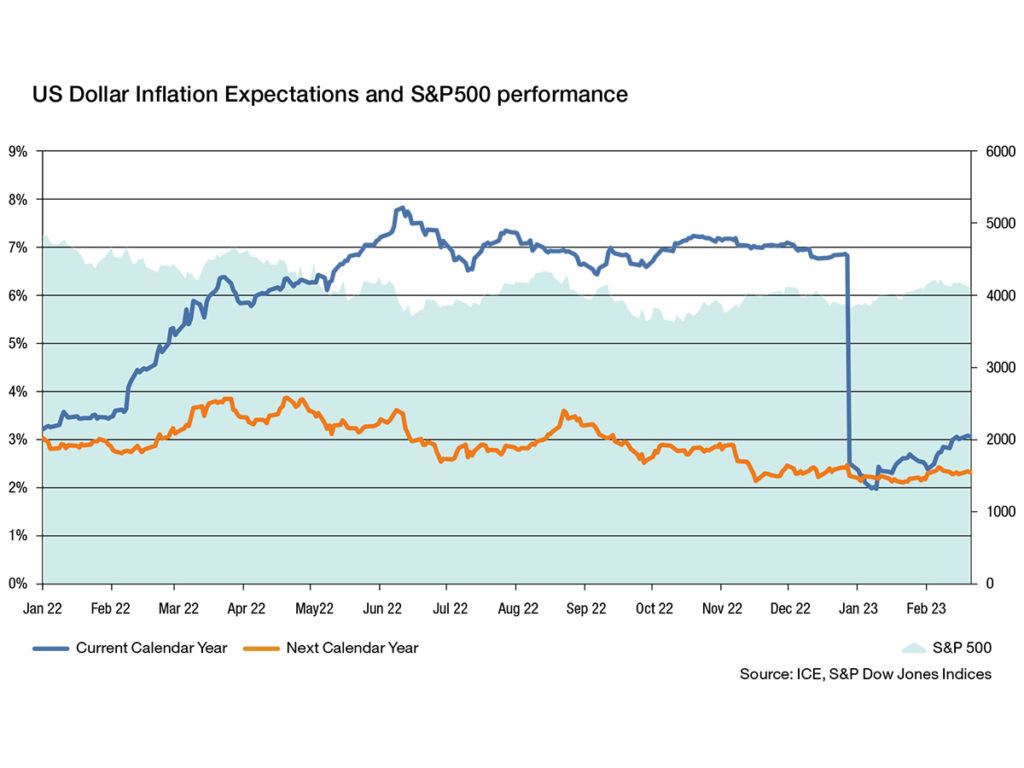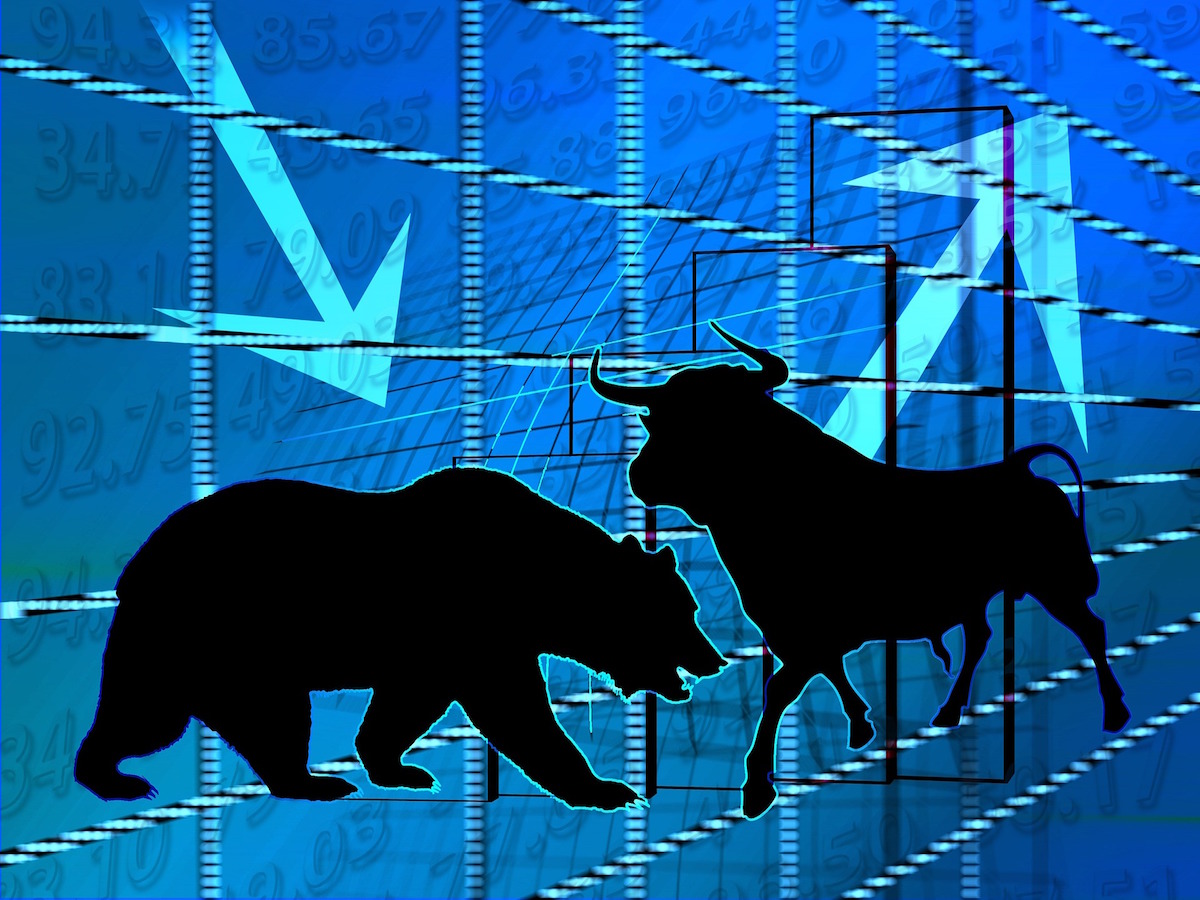The first quarter was not a good year for cautious investors. If they had bet on a recession in 2023 and sold their equity portfolio, they would have missed out on the rally. The S&P500 rose by nearly 5%, year to date, while in the UK, which months ago was described by Deutsche Bank as a quasi-emerging market, the FTSE100 hit an all-time high of 8,000 in early February.
Despite abysmal fundamentals, stock markets are being driven by a belief that inflation could settle down sooner than expected. This is, after all, what central banks are predicting. The Fed expects inflation to drop to below 3% this year from 8.5% today. Meanwhile, the Bank of England believes that price growth could slow to 4% by the end of this year despite it standing at 10.1% today. This expectation has now been priced into US markets, as the ICE Index suggests. The index, which uses a combination of treasury market data and inflation swaps pricing, showed a sharp surge in inflation expectations in the middle of last year but has since climbed down to below 4%.

Markets appear to have interpreted this to mean that rate hikes might peak sooner than expected and that equities still have some way to go. Europe-domiciled long-term funds reported inflows of €54.1bn (£47.7bn) in January, their best result in two years, with almost half (£22bn) going into equities, according to Morningstar.
But this bet hangs on two crucial factors. First, that central bank forecasts are correct that inflation climbs down. However, over the past year, the Fed, ECB and the Bank of England have persistently missed their inflation forecasts. The second factor is timing. Historical evidence suggests that it takes at least a year for the effects of rate hikes to feed through to the real economy. This suggests that the real impact of rate hikes on labour, credit and equities remains to be seen. Yet fundamentals are far from promising. Apple, which is a prominent S&P constituent, reported a 5% year-on-year drop revenue, while Microsoft missed its earnings per share targets by almost the same margin.
While equity markets are banking on the short term, central bankers are aware of the medium-term risk of hiking rates as the economy plunges. Stock market bulls may have had a good year so far, the big question is how long this will continue.





Comments